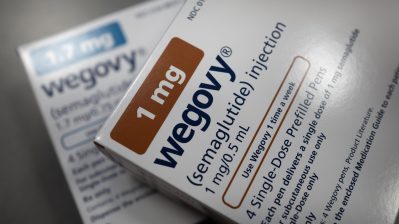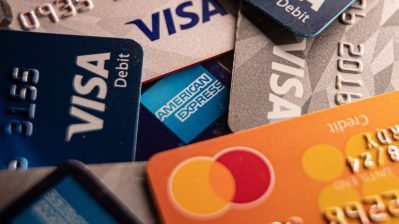
Alaska’s annual dividend adds up for residents

This time of year in Alaska, residents are applying for their Permanent Fund dividend. That’s the check paid to every man, woman and child in the state. But Alaska is facing a massive budget deficit, brought on by falling oil prices. Lawmakers struggling to close the gap are considering cuts to the dividend.
Now, the state may scale back the program just as many countries warm to a similar idea.
Outside Alaska, the Permanent Fund dividend has probably been best summed up in the popular imagination by — the Simpsons, who arrive in Alaska in 2007’s The Simpsons Movie and are immediately handed a thousand dollars.
“Well, it’s about time,” Homer says. “But why?”
Even to Alaskans, the dividend — known as the PFD — can sometimes seem a little nuts, especially when it tops $2,000, as it did last year. That’s more than $8,000 for a family of four.
But to the late Gov. Jay Hammond, who pushed for the dividend in the early days of Alaska’s oil boom, it just made sense: if the oil is owned by all Alaskans, he said, some of the benefits should go directly to the people.
The result has been a three-and-a-half decade experiment, one that’s drawn attention outside the state’s borders. That’s especially true among supporters of one old idea in the midst of a renaissance: the universal basic income — a guaranteed minimum payment for all citizens.
“This is the closest thing to a basic income that has existed for any significant period of time, anywhere in the world,” said Karl Widerquist, an associate professor at Georgetown University’s School of Foreign Service in Qatar. “There are a lot of people talking about it, but only Alaska has done it, and Alaska’s been doing it for over 30 years.”
The idea of a basic income is having a moment, spurred in part by growing attention to income inequality. There’s a referendum planned for Switzerland; pilot projects rolling out in Finland, the Netherlands and Canada; and interest from Silicon Valley.
Widerquist says all of these places can learn from Alaska. So what do we know, after 34 years?
“There’s an awful lot that we don’t know,” said Gunnar Knapp, who runs the Institute of Social and Economic Research at the University of Alaska, Anchorage.
There’s not much research on the dividend, Knapp said. But some things are clear. For one, the dividend is overwhelmingly popular. That may seem obvious, but it’s interesting, given a second point: the dividend matters a lot more if you’re poor than if you’re rich. For the 20 percent of Alaska households averaging $35,000 a year or less, the PFD is a major source of income.
That’s one reason Alaska has one of the most equal — or least unequal — distributions of wealth in the U.S., Knapp said, “there’s many other things that enter into income equality, but certainly we know that the dividend is a contributing factor.”
It also makes a bigger difference for Alaskans in rural areas than for those in urban hubs like Anchorage and Fairbanks.
Standing outside the AC supermarket in Bethel, 400 miles from Anchorage, you meet plenty of people like Marie Andrew. She said her PFD usually goes to groceries and bills. If lawmakers cut the dividend, that will be a big deal.
“It would affect me a lot,” Andrew said. “I wouldn’t be able to pay my lights or buy food.”
Andrew is from Tuluksak, one of about 50 Alaska Native villages in the region, accessible mostly by small plane. There aren’t a lot of jobs in this part of the state and even the basics are expensive — at this grocery store, milk hovers around $7.50 a gallon. The PFD can be an essential cash infusion.

The PFD has a bigger impact in rural Alaska, where the cost of basics, like milk in this grocery store in Bethel, can be expensive
It’s also a way to build savings. 36-year-old Damien Jones, in town from Anchorage, said his last dividend went straight to the bank. “That’s the best way to save it,” Jones said. “Put it in savings, let it accumulate, and when a rough time comes, you use it.”
That’s an important function of the PFD, Knapp said. “It provides a way to accumulate and save money over time,” he said. “Wealth that can pay for going to college, wealth that can pay for a down payment on a home, that can pay for starting a business.”
And that may be the main takeaway from the Alaska experiment: over the years, a thousand dollars here and a couple thousand there can really add up.
There’s a lot happening in the world. Through it all, Marketplace is here for you.
You rely on Marketplace to break down the world’s events and tell you how it affects you in a fact-based, approachable way. We rely on your financial support to keep making that possible.
Your donation today powers the independent journalism that you rely on. For just $5/month, you can help sustain Marketplace so we can keep reporting on the things that matter to you.

















